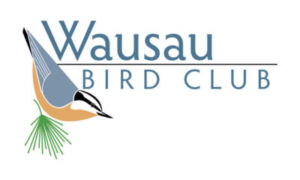Bluegill Bay County Park is one of the best locations in the Wausau area for bird watching and offers many common and some uncommon birds. With nearly 70 acres in size, the park includes a variety of habitats ranging from forest, forest edge, alder thickets, marshy areas and views of Lake Wausau and the Wisconsin River. A large pond in the center of the park attracts waterfowl, herons, grebes, and a host of birds that live near the water. A trail system leads visitors to every habitat within the park, and several picnic areas offer a good place to rest and tally up your checklist of what you’ve viewed and heard.
Nearly 200 species of birds have been sighted in and around the park in any given year. Peak birding opportunities are spring and fall when migrating birds are moving through. During this time you might view up to 28 species of warblers, seven species of woodpeckers, eight different flycatchers, seven variety of thrush, five different vireos, 12 types of sparrows, and 10 species of finches.
Some of the more interesting birds to look for during spring and fall migrations include; Northern Saw-whet Owl (often found by watching for chickadees and nuthatches mobbing one roosting next to a tree trunk), Olive-sided Flycatcher (usually found around the pond or the flooded wooded area just west of the pond), Yellow-bellied Flycatcher, Tufted Titmouse (could become a park resident in the near future), Gray-cheeked Thrush, Bohemian Waxwing, Philadelphia Vireo, Black-throated Blue Warbler, Bay-breasted Warbler, Canada Warbler, Connecticut Warbler, Harris’s Sparrow, and Red Crossbill.
In late spring and summer, resident birds are busy building nests and raising young. Some highlights during this period include Green Heron, Cooper’s Hawk, Pileated Woodpecker, Great Crested Flycatcher, Eastern Kingbird, Red-breasted Nuthatch, Gray Catbird, both Pine and Yellow Warblers, Rose-breasted Grosbeak, Baltimore Oriole as well as Barred and Great Horned Owls.
Historically, Broad-winged Hawk and Ruffed Grouse were known to nest in the park, but as urban sprawl eventually surrounded the park, they no longer breed here. Pine Siskins have most likely nested in the park after invasion winters. Red-headed Woodpeckers, which are rarely seen in this park, have been sighted in the flooded wooded area just west of the large pond in the past, but it’s unknown if nesting ever took place. A few other birds nest around the area, but not within the park itself. They do, however, use the park for hunting prey. It’s not uncommon to see Osprey hunting for fish in the large pond, or a Merlin cruising through every now and then.
During winter months, keep an eye out for finches. Pine Grosbeak, White-winged Crossbill, Common Redpoll, and Purple Finch have appeared in the park in the past. Historically, Evening Grosbeaks were occasionally seen in the past but in recent years the chances of viewing one in the park are slim. Northern Shrike are seen sporadically, often sitting on the top of a tree surrounding the pond. Other winter residence include Dark-eyed Junco, Pine Siskin, Brown Creeper, and occasionally the American Robin are viewed near the small spring fed pond (next to the large pond) that stays open all winter long.
Unusual or rare bird sightings in the park include; Red-necked Grebe, Yellow-crowned Night-Heron (an adult found in the spring of 1991), Northern Goshawk, Whip-poor-will, Hooded Warbler, Summer Tanager, Dickcissel, and Yellow-headed Blackbird.
Text by Dan Belter
